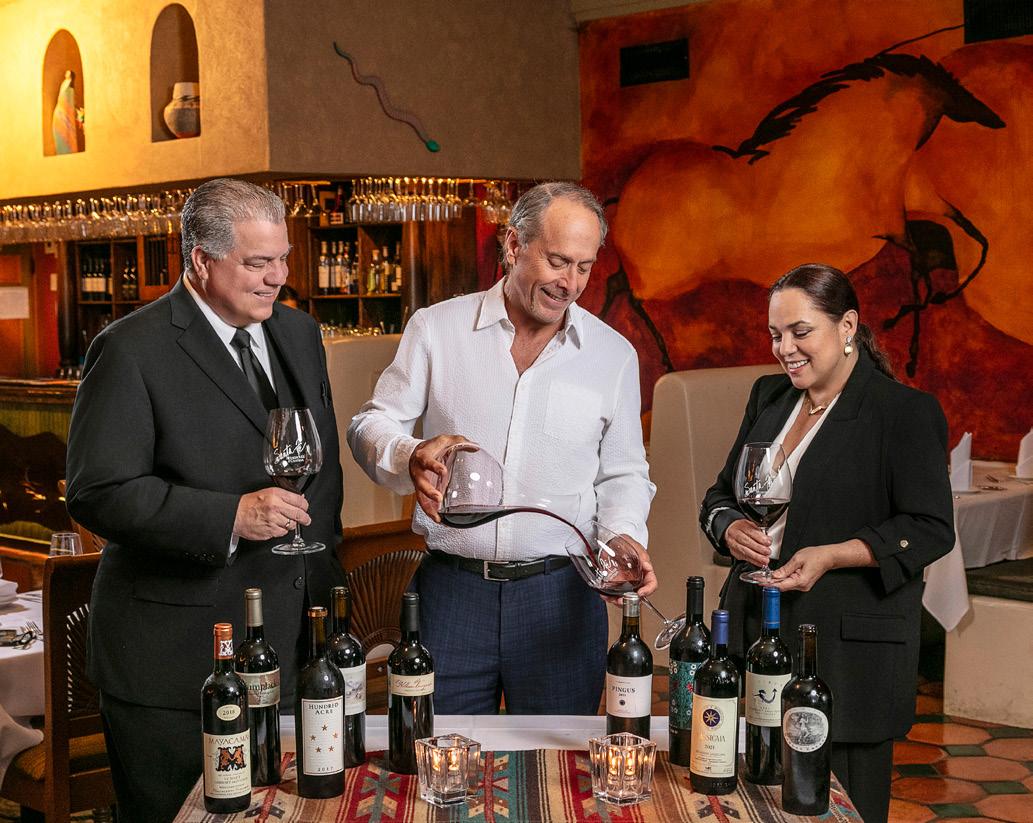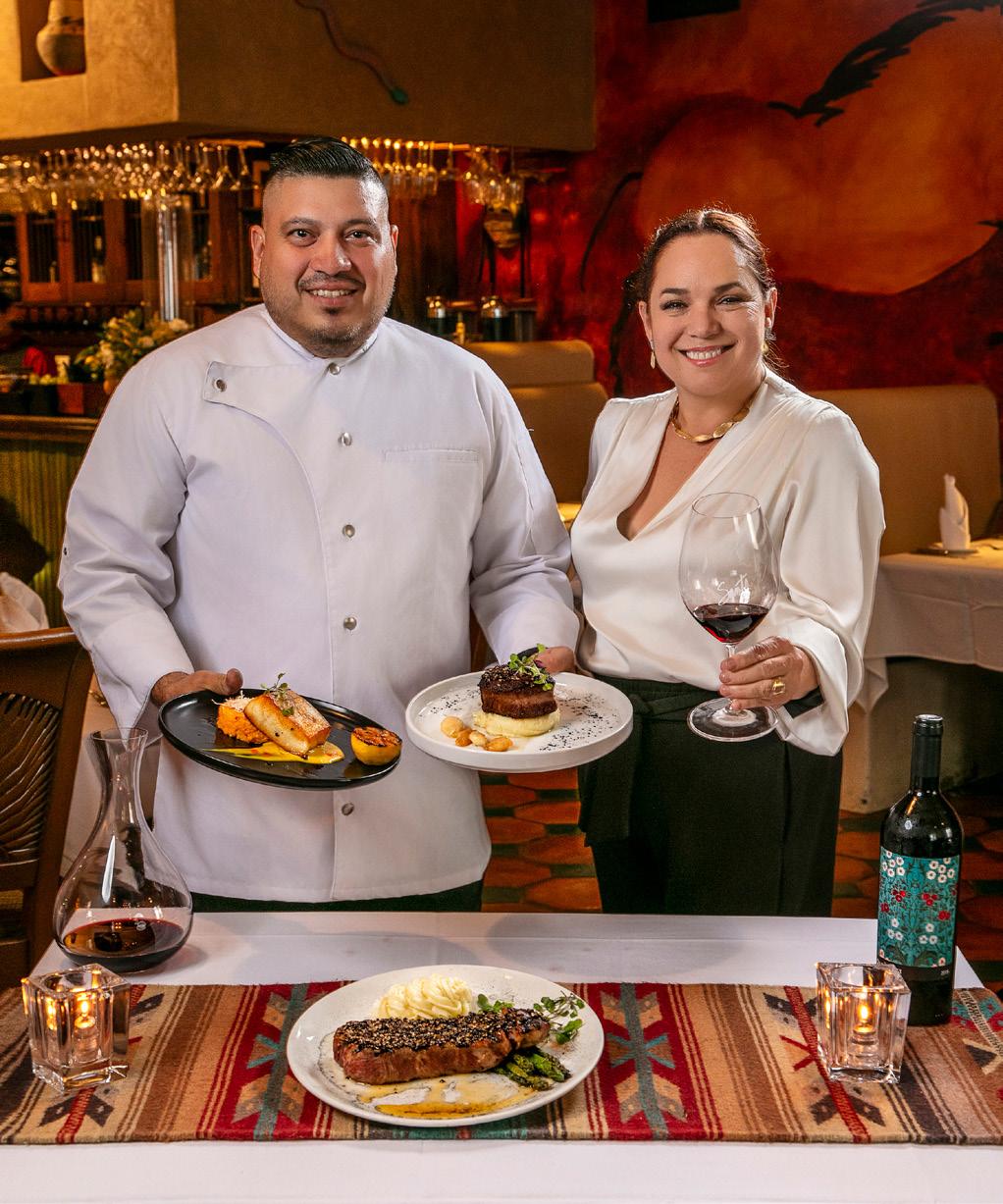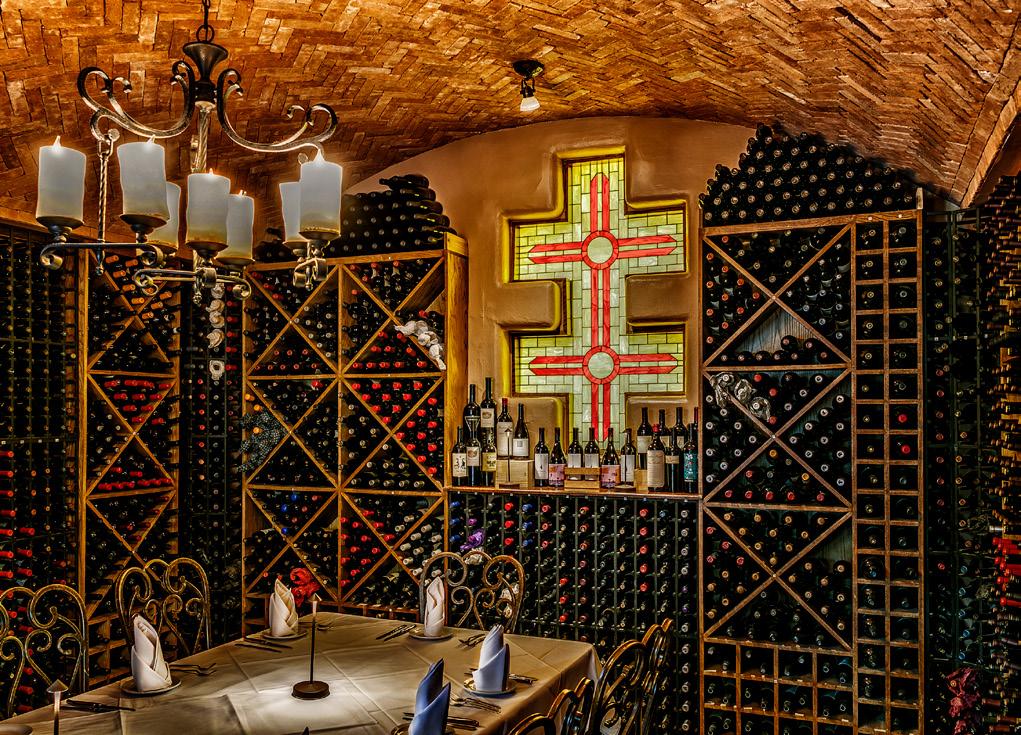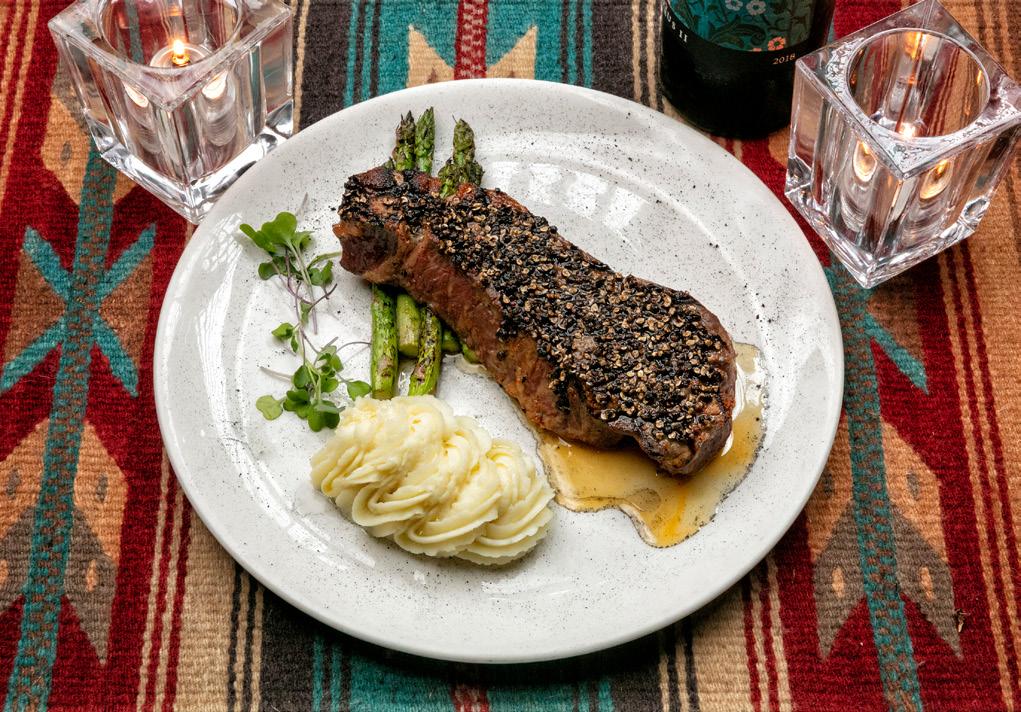
7 minute read
Santa Fe Steakhouse: A Mood, A Memory, A McAllen Original
By Dr. Kimberly Selber | Photography by Cliff Ranson
Walk through the stone arch and you feel it—piñon‑smoke memory, a hush that belongs to old Santa Fe, and the soft shimmer of a piano warming up for the night. In McAllen, Texas, Santa Fe Steakhouse & Cantina is a mood: stacked‑stone walls laid by hand; a herringbone brick dome overhead; warm light that flatters ribeyes and romances first dates. It’s a space deliberately layered.
In the early 1990s, developer-builder Fred Harms returned to his roots in the Valley after several years in Santa Fe, New Mexico. What he missed most wasn’t just the mountain air or adobe sunsets—it was Vanessie, his favorite piano bar. A place with warmth, character, and soul, where local opera singers dropped in after curtain call, where stacked stone met candlelight, and Rhapsody in Blue drifted through the scent of burning piñon. Back in the Valley, Fred saw the gap—there was no upscale steakhouse with that kind of atmosphere. So, he decided to build one.
He didn’t do it alone. It was a true family effort. Partners Bernard Watson and Lisa Franz came aboard, along with Fred’s brother Mike (and wife Bonnie) and sister Mary. Fred and Bernard hand-built much of the space themselves—brick by brick, arch by arch—bringing the vision to life. The grand piano became a fixture in the dining room, with a mirror behind the keys so guests can see what they’re hearing. Over the decades, a small constellation of pianists—some legendary in Mexico’s music circles—have kept that old-school elegance alive, six nights a week.
Santa Fe Steakhouse quickly became the hotspot of the Central Valley, with long wait times that became part of the story. To ease the crowd and complete the experience, the team added the Santa Fe Cantina a few years later. It worked—beautifully. The Cantina became the place in McAllen, often running at standing-room-only for years. It had a life of its own, and the restaurant was better for it.
You could sip a cocktail and share appetizers while waiting for your table in the main dining room, then drift back after dinner to hear some of the area’s best bands and dance into the night. The result felt like something out of another era—an old-school crooner concept with border-town edge. And that same rhythm still plays today. There’s nothing else quite like it in the Valley.
After 14 years of incredible success, Fred was ready for Santa Fe to write a new chapter. It was his partnership with Sony and Albert Rego, which began in 2000, that set the stage for Santa Fe Steakhouse and new ventures the trio would embark on.

A MELODIC TRIO
Sony and Albert Rego first became owners of Republic of the Rio Grande, the popular McAllen bistro, in 2000. They’d newly moved to McAllen when Sony fell in love with the place over lunch—and learned Fred Harms had it up for sale. The banks weren’t exactly lining up, but Fred believed in them and helped structure a deal. Sony has since described it as the chance that launched her career here.
Fred’s instinct was right. Seven years later, he invited them into Santa Fe—no “controlling interest” strings attached. Several years into the partnership with the Regos, the team recognized a gap in their offerings: the lack of private event space. In 2010, they launched a thoughtful expansion, adding a private wine cellar, the Anastasi Room, and a rooftop terrace. Albert and Fred collaborated closely, laboring over every detail to maximize the space within the property’s constraints—ensuring the additions felt like a natural extension of the original vision.
That chemistry shows in the details. The wine room’s New Mexican Zia Cross—symbol of the sun and the fusion of Spanish and Native New Mexican cultures—was inlaid with a stained-glass double-Zia, a subtle nod to the partners’ Zia-named company. The effect is quiet, intentional—nothing shouts, everything hums.
A LIVING ROOM FOR THE VALLEY
Ask longtime guests and you’ll get a parade of milestones: engagements at table 14, prom dates who return a decade later to celebrate anniversaries, parents still ordering their favorite steak while their grown children bring the next generation to hear the piano. The long-time staff deepens the Santa Fe magic—Pedro Gonzalez has been coaxing perfect doneness from ribeyes since Santa Fe opened in 1993; Victor Salinas, part server, part stand-up, has worked the floor for 33 years; James Glindo and many others carry the rhythm forward. The menu evolves in small, intentional steps. The steaks are the mainstay of the menu, but the appetizer list is where the kitchen flexes. Even the lobster bisque carries a little swagger. The wine list? Ambitious, deep, and built over time.

WINE CELLAR
Beneath the dining room’s hum, the cellar sits whispercool—rows of bottles like a passport to everywhere. Fred, Santa Fe’s meticulous wine buyer, curates the list with a collector’s eye and a hunter’s drive, balancing iconic labels with fresh finds. Noe Avila, the in-house sommelier, manages the 800+ selections—one of the largest wine lists in Texas.
Sony—once a newcomer to oenology (the study of wines)— has worked her way through formal training and is now a level II sommelier—guiding guests from comfortable favorites to “trust me” pours that make the steak sing. It’s a tag-team that hasn’t gone unnoticed: Santa Fe Steakhouse has received Wine Spectator’s Best of Award of Excellence honors ten years in a row, a nod reserved for destination programs with serious breadth, smart verticals, and service to match. For those who want to learn more about wine and pairings, Santa Fe hosts a popular monthly wine dinner.

GIVING BACK
Santa Fe’s most visible way of giving back is the Santa Fe Wine Classic—launched in 2009 as a scholarship idea and grown into one of the Valley’s signature nights. Year after year, the owners and partner vintners have turned pours into opportunity, raising hundreds of thousands for education and benefitting more than 300 students. Proof that a great vintage can fund a first-generation future. And beyond the gala, the partners keep the spirit of service in motion—serving on boards, championing accessibility, advancing workforce pathways that lift hospitality families across the region, and donating to over 30 charities.

WHY IT ENDURES
Plenty of restaurants can cook a steak. Few can make time seem to slow down. Santa Fe manages that by honoring the fundamentals—the welcome, the lighting, the pacing, the piano. Instead, they keep polishing what already works: a steakhouse that feels like a salon, a bar that belongs to the city, and rooms that look assembled over the years because they were.
If you ask how the place has lasted this long, the answers are refreshingly unromantic: show up, tell each other the truth, and keep the piano tuned. Come December, they burn piñon, and the room smells like northern New Mexico. You might look up at that stained-glass Zia cross and think about continuity—how a restaurant becomes a ritual, how a ritual becomes a city’s memory.
The last bite is always the same: not just dinner, but a chapter. Not just a steakhouse, but a place you return to— because somewhere between first pour and last chord, it became yours, too.

